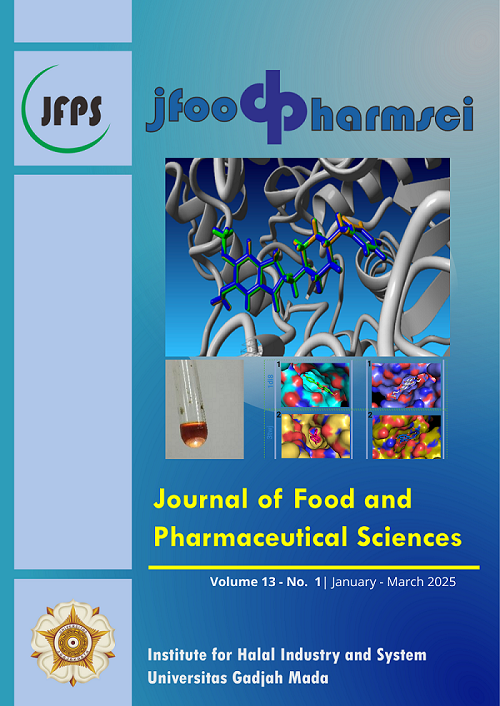Optimization of Liquid Paraffin as an Emollient and Propylene Glycol as a Humectant in the Formulation of Body Lotion containing Alpha-Arbutin
Abstract
Dry skin due to sun exposure can be prevented by using moisturizer. Moisturizer can be found in body lotion preparations in the form of emollients such as liquid paraffin and humectants such as propylene glycol. The purpose of this study was to determine the effect and optimum concentration of liquid paraffin and propylene glycol on the physical characteristics and moisturizing power of body lotion and to determine the antioxidant activity and physical stability of the optimum formula of alpha-arbutin body lotion. The comparison of liquid paraffin and propylene glycol concentrations was determined based on the design expert 10.0.1 simplex lattice design method. The formula for the comparison of liquid paraffin and propylene glycol is FI (8.5:10.5); FII (10:9); III (10:9); FIV (5.5:13.5); FV (7:12); FVI (4:15); FVII (4:15); FVIII (7:12). The test parameters used in determining the optimum formula are pH, viscosity, adhesion, spreadability and moisture. The results of the test using the T-test. Based on the results of the study, the optimum formula was obtained at a concentration of 10% liquid paraffin and 9% propylene glycol. The conclusion of this study is that liquid paraffin or propylene glycol increases pH, viscosity, spreadability, adhesion and moisture content while the combination of the two materials increases spreadability, adhesion, moisture content and decreases pH and viscosity. The results were validated by the T-test showing that all parameter results were not significantly different. The optimum antioxidant formula test produced an IC50 value of 159.09 ppm which is included in very weak antioxidants and after going through a cycling test, an increase in pH value, adhesion, spreadability and decreased viscosity were obtained but were still stable in color, odor and homogeneity.
































